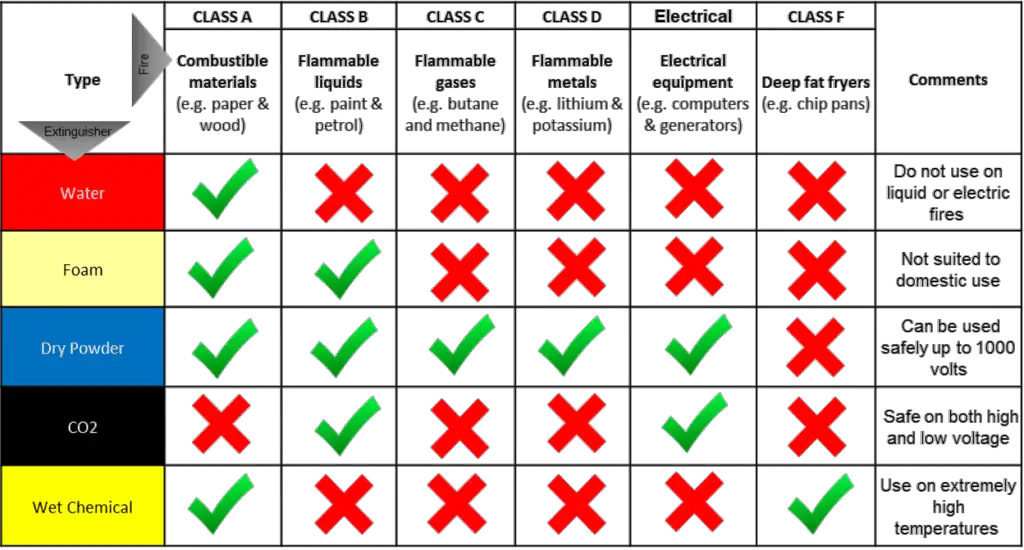Fire can ruin homes and cause damages to lives. Fire extinguishers help to deal with small fires until the fire department comes to rescue.
The basic structure and components of most household fire extinguishers are the same. There is a little variation in the making such as a metal or plastic handle or steel or metal cylinders.
But do you often wonder, what is inside these fire extinguishers which can put out fires?
It is important to understand the types of fires before covering what is inside them.
Take a look at these types of fires associated with the different materials.
- Class A: wood, cloth, and paper type fires.
- Class B: combustible liquids such as oil and paint type fires.
- Class C: Electrical equipment type fires.
- Class D: Flammable metals.
- Class K: Animal or vegetable oils or cooking fats type fires.
What is inside these home fire extinguishers?
- Dry chemical extinguishers include Classes A, B, and C type fires. They use mono ammonium phosphate as a dry chemical. The mono ammonium phosphate is a yellow powder. This is corrosive, so it needs to be cleaned after use. In some extinguishers they use, sodium bicarbonate as a dry chemical. It is meant for extinguishing classes B and C fires. Another chemical in Class B and C extinguishers is potassium bicarbonate. The reason classes A, B and C fire extinguishers are the most suitable for home use, is that they work on most of the common types of house fires at the same time.
- Water extinguishers use tanks full of h2O with compressed air. This compressed-air works as the propellant. These work by removing heat from the fire. These are exclusively used for class A fires.
- Class K extinguishers use a wet chemical that contains a potassium acetate-based agent. The agent forms a soapy foam. It is suitable for commercial cooking areas.
- Carbon dioxide extinguishers consist of a mixture of liquid and gaseous carbon dioxide. CO2 is usually a gas at room temperature and pressure. These fire extinguishers emit pressurized CO2 gas. This CO2 gas suppresses the fire by preventing the oxygen the fire needs.
These agents are put into a pressurized vessel and then discharge the extinguishing agent. These agents are then discharged by various means.
An extinguishing agent that is suitable for a particular type of fire may not be appropriate for another type of fire.
Water extinguishers are not suitable for flammable liquid fires. These extinguishers can create an explosion due to flammable liquids on water. For example, water extinguishers are not for electrical fires.
They can be risky and can cause more problems.
The best fire extinguishers for homes are the ABC type fire extinguishers. Still, there are different types of fire extinguishers.
The next time you are on a search for a home fire extinguisher, make a conscious selection while understanding what is inside the fire extinguisher.

